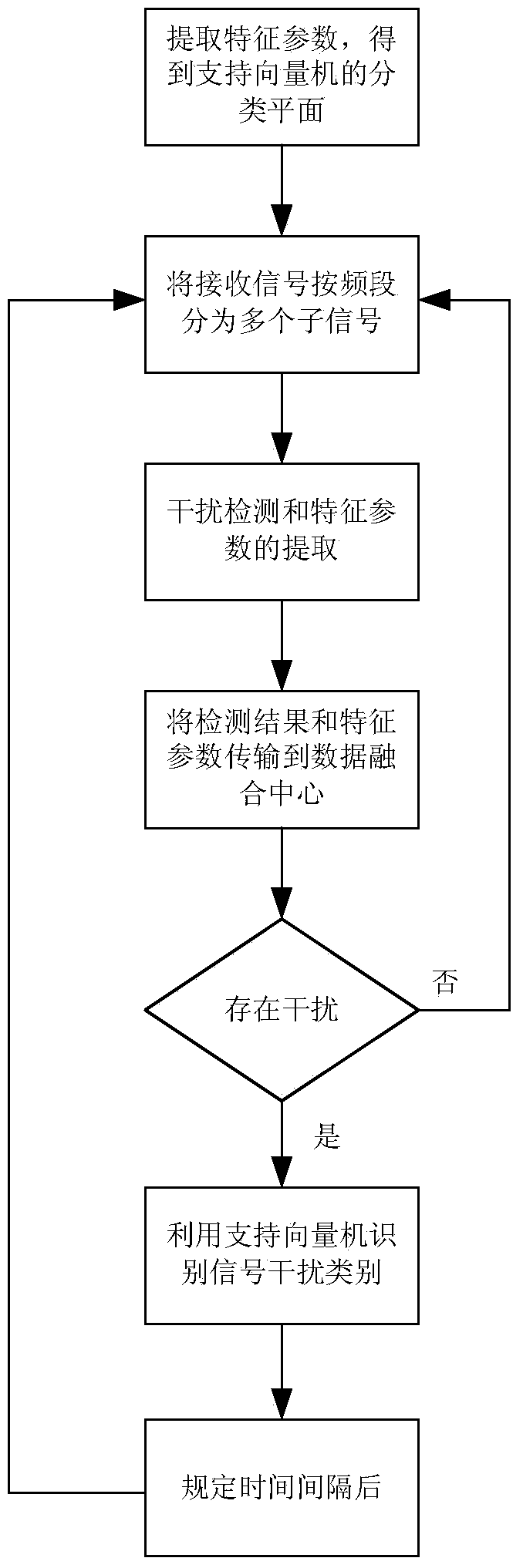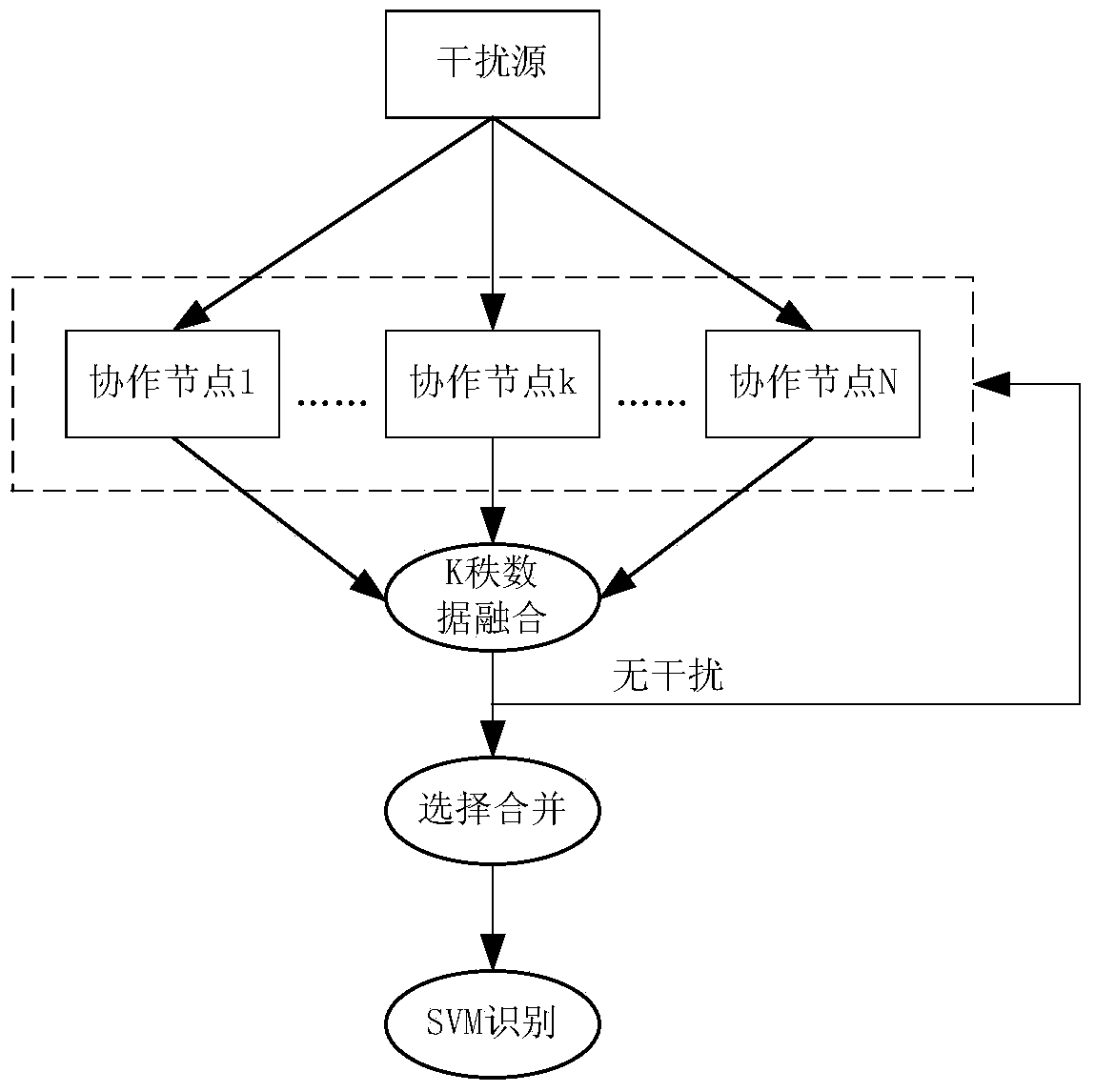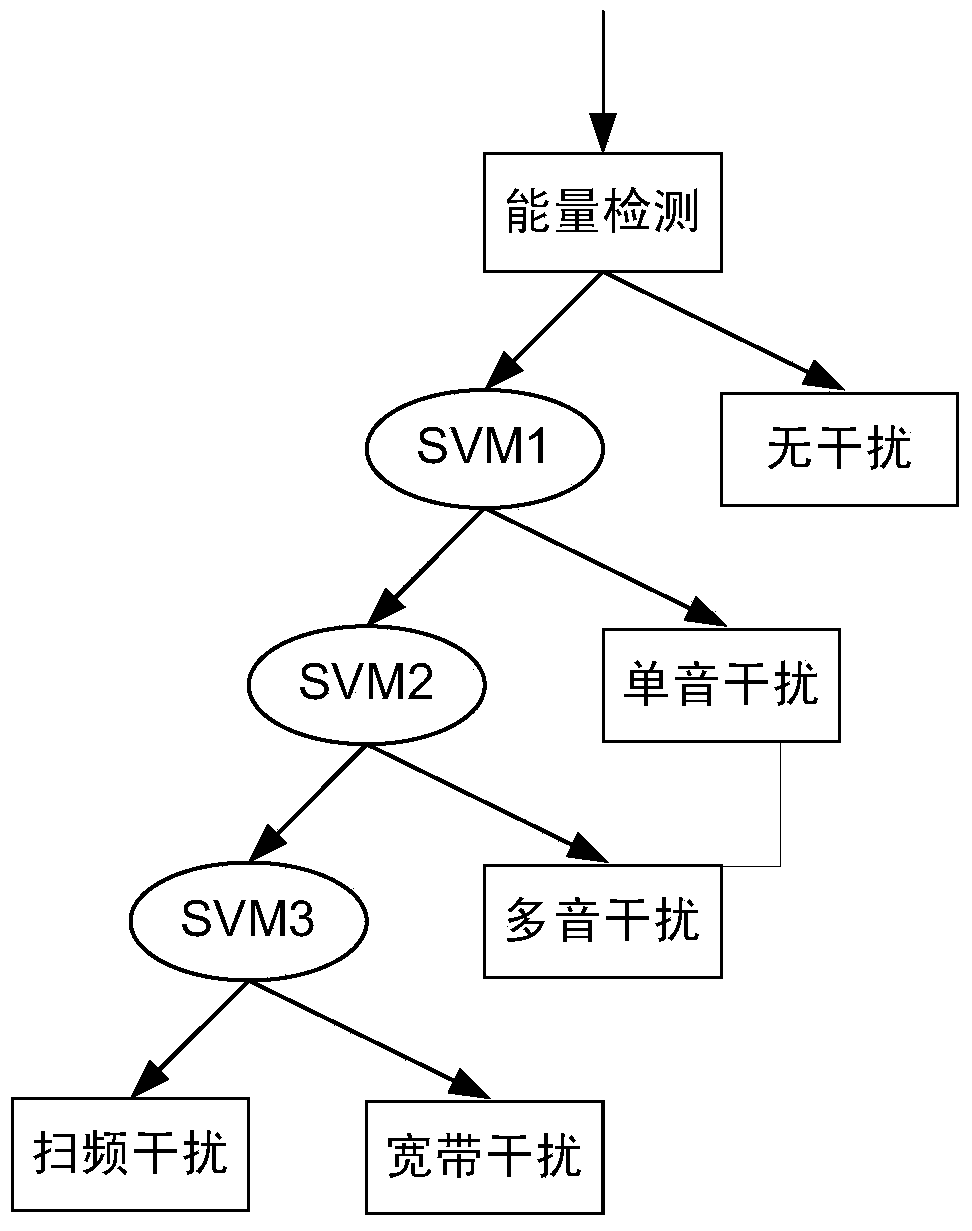Cooperative interference detection method based on support vector machine
A technology of support vector machine and interference detection, applied in space transmit diversity, network planning, electrical components, etc., can solve problems such as blocked channels, inaccurate interference identification results, multipath fading of interference signals reaching the receiver, etc., to reduce overhead , Improve the effect of recognition performance
- Summary
- Abstract
- Description
- Claims
- Application Information
AI Technical Summary
Problems solved by technology
Method used
Image
Examples
Embodiment Construction
[0017] Below, combine Figure 1 to Figure 3 The present invention is described further:
[0018] A cooperative interference detection method based on support vector machines. In a multi-node cooperative detection system, one of the nodes acts as a data fusion center, and each cooperative node will perform energy detection and feature parameter extraction on received interference signals. The data is transmitted to the data fusion center, and then the data fusion interference identification is performed at the node of the data fusion center, as shown in the schematic diagram figure 2 shown. Support vector machines such as image 3 As shown, the traditional support vector machine method is based on two types of problems. In a multi-point cooperative interference identification method based on support vector machines, the "one-to-many" method is used to convert multi-type problems into two types of problems, namely Construct K two-class classifiers for K-class problems. The t...
PUM
 Login to View More
Login to View More Abstract
Description
Claims
Application Information
 Login to View More
Login to View More - R&D
- Intellectual Property
- Life Sciences
- Materials
- Tech Scout
- Unparalleled Data Quality
- Higher Quality Content
- 60% Fewer Hallucinations
Browse by: Latest US Patents, China's latest patents, Technical Efficacy Thesaurus, Application Domain, Technology Topic, Popular Technical Reports.
© 2025 PatSnap. All rights reserved.Legal|Privacy policy|Modern Slavery Act Transparency Statement|Sitemap|About US| Contact US: help@patsnap.com



